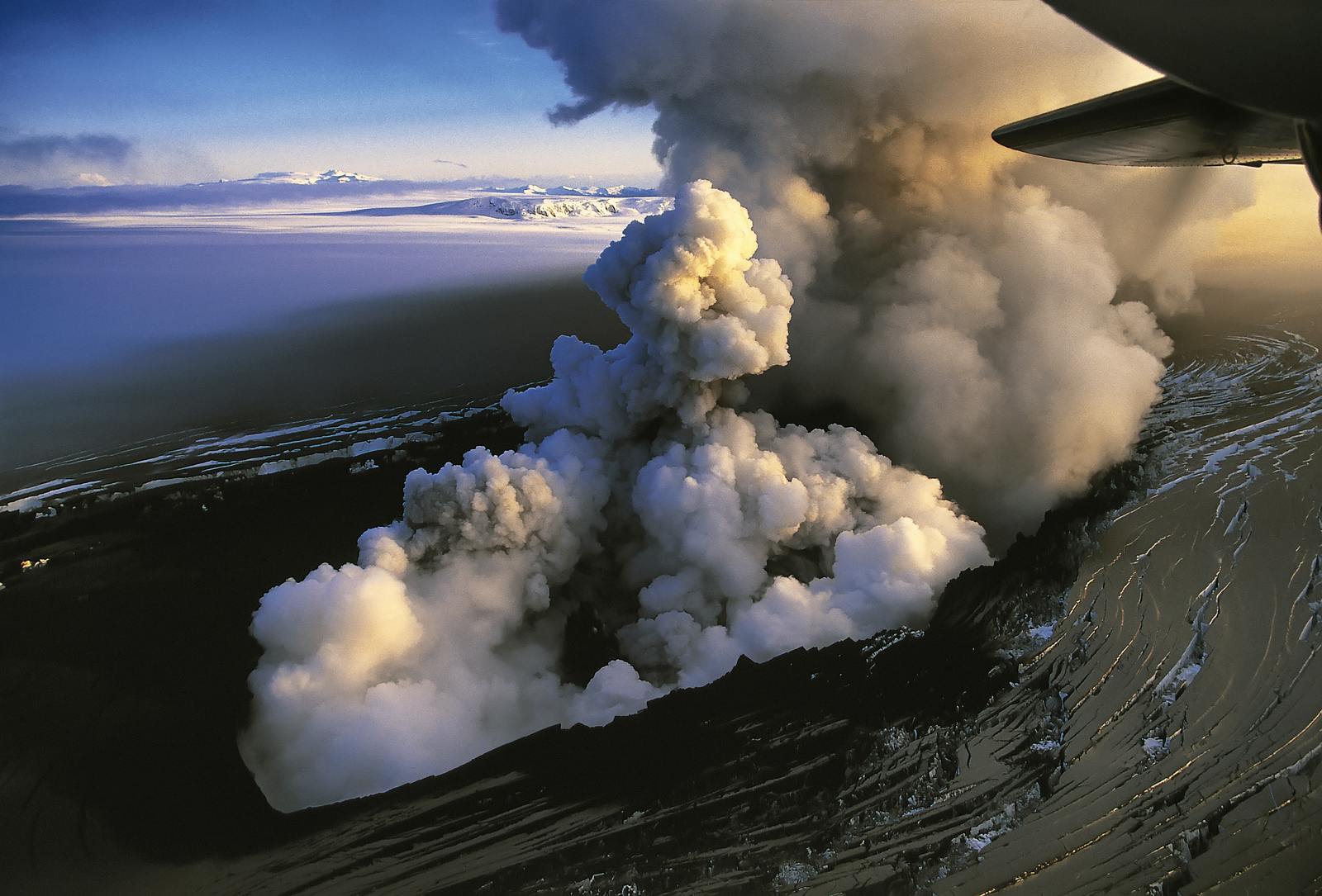
What is a Phreatic Eruption?
A phreatic eruption occurs when water touches magma beneath the earth’s surface, leading to the rapid conversion of water into steam. This sudden release of steam can cause a sudden and explosive burst of volcanic activity.
What Happens During a Phreatic Eruption?
During a phreatic eruption, there may not be a significant release of lava, but rather, the volcanic explosions are driven by the pressure and sudden release of steam. The water interacting with the magma below the surface can come from various sources, such as groundwater, lakes, or even the ocean.
These eruptions are often characterised by the ejection of ash, rocks, and other volcanic material, and they can be quite hazardous due to the force of the explosions and the potential for harmful gases to be released.
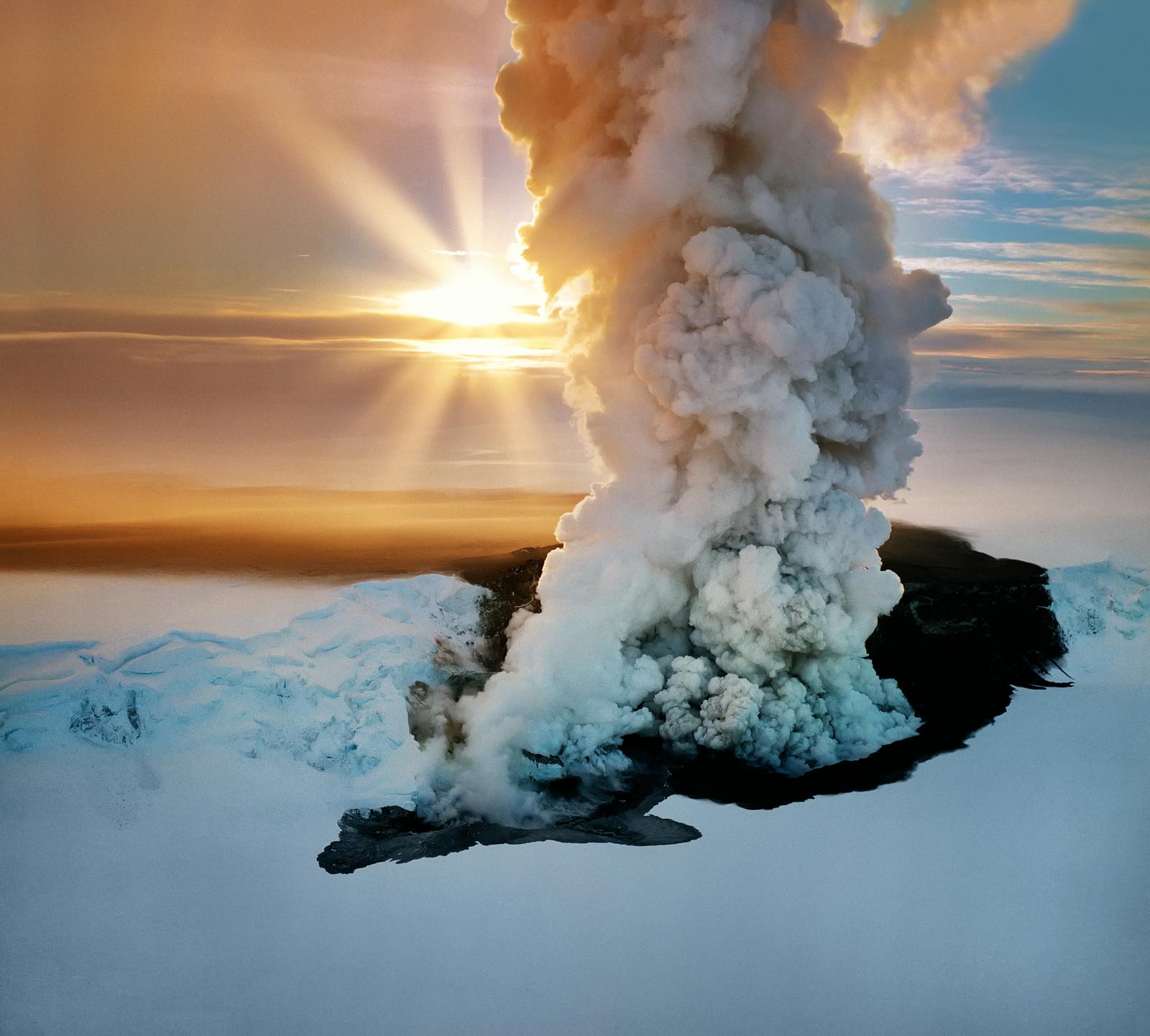
Where can Phreatic Eruptions Occur?
Phreatic eruptions can occur where the volcanic vents or craters are situated in wetland or in a bog, in a lake and also in shallow sea. Phreatic eruptions may precede or accompany other types of volcanic activity. It’s essential for people in volcanic regions to be aware of the potential for phreatic eruptions and to follow the guidance of local authorities for safety measures during volcanic events.
Are Phreatic Eruptions Dangerous?
Phreatic eruptions can be dangerous and pose specific risks to individuals and towns near volcanic areas. Several factors contribute to the hazards associated with phreatic eruptions, including explosive force, where the sudden release of steam can generate powerful explosions, propelling rocks and debris into the air at high velocities. This can directly threaten people, structures, and the surrounding environment.
Ashfall is another potential hazard, as phreatic eruptions often produce ash clouds that can travel over significant distances. Ashfall can have various impacts, including respiratory problems, damage to crops and infrastructure, and disruptions to transportation. Likewise, volcanic gases such as sulfur dioxide can be released during phreatic eruptions. These gases can pose health hazards and contribute to air pollution.
Also, the rapid release of steam and the ejection of material can trigger secondary hazards, such as landslides and mudflows.
Can Phreatic Eruptions be Predicted?
Phreatic eruptions can occur suddenly and without significant precursors, making them challenging to predict. This unpredictability adds to the potential danger for those living in volcanic areas.
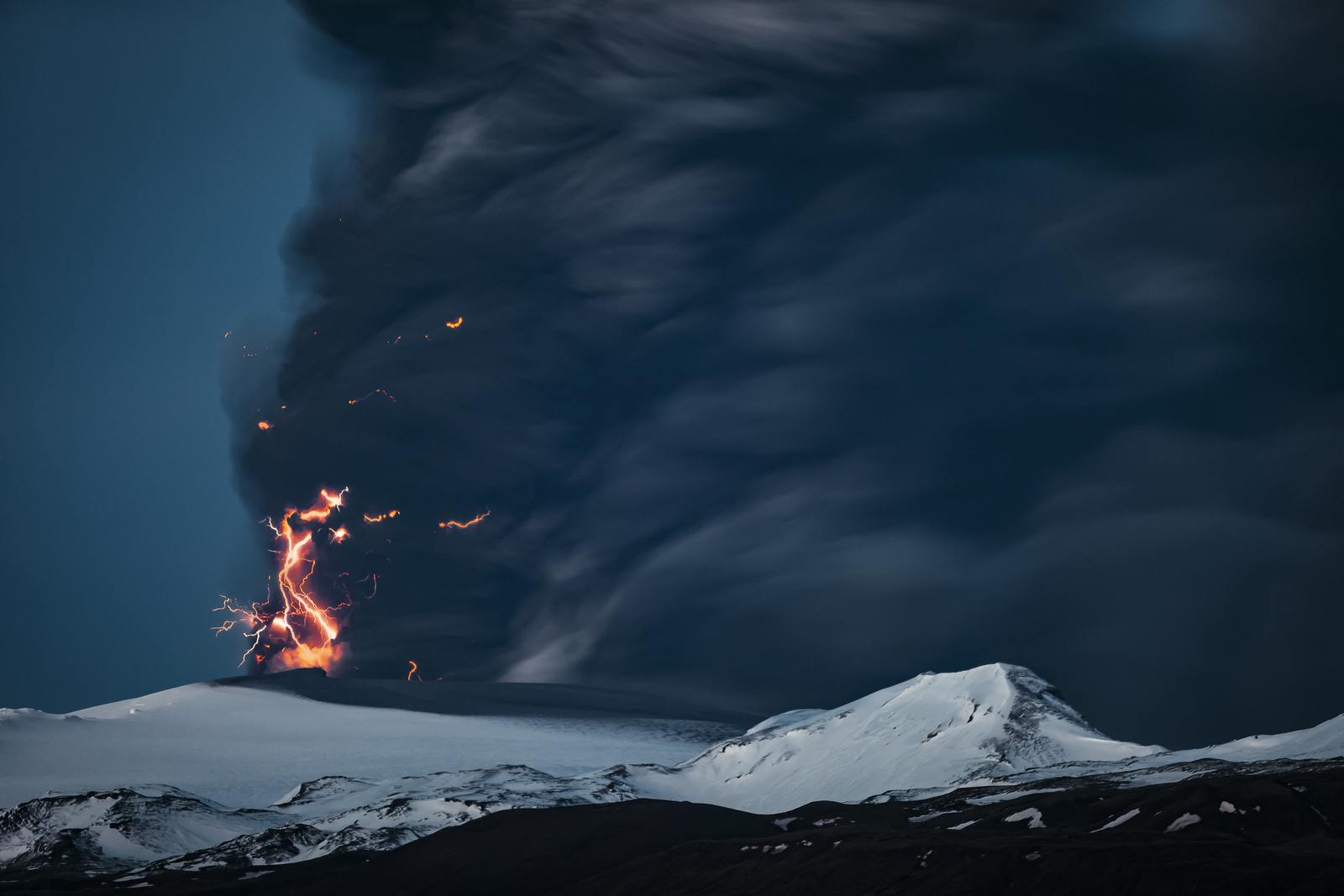
Have There Been Phreatic Eruptions in Iceland?
Phreatic eruptions are rare in Iceland, and no such eruption has occurred during historical times. The best-known examples are explosive events happening in Krísuvík south of Reykjavík some thousand years ago. Then, heavy explosions resulted in large water-filled craters called Grænavatn and Gestsstaðavatn. As with any volcanic region, monitoring and research efforts are crucial for understanding and predicting volcanic activity in Iceland.
Learn About Volcanoes at Perlan in Reykjavík
Perlan’s Forces of Nature exhibition allows guests to feel the immense power of volcanoes, earthquakes, and geothermal energy that powers the island. In the heart of Reykjavík, guests can learn about the volcanoes that form when heat and pressure build up beneath the earth’s surface. The earth’s weak points tend to be along fault lines where tectonic plates converge or diverge, as in Iceland’s case. The exhibition is a unique, family-friendly museum experience that entertains and informs.
What is the difference between phreatic and phreatomagmatic eruptions?
Both phreatic and phreatomagmatic eruptions are driven by the interaction of water and magma, but the key difference lies in the presence of magma at the surface:
- Phreatic Eruption: When scorching hot magma comes into contact with groundwater or surface water, it instantly vaporises the water into steam. This rapid expansion of steam triggers a violent explosion that hurls a mix of rock fragments, ash, and scalding water into the air.
- Phreatomagmatic Eruption: Similar to a phreatic eruption, magma heats water, creating a powerful steam explosion. This ejected magma can sometimes form new volcanic features like cinder cones or maars (broad, low-relief craters).
In short, phreatic eruptions typically don't involve any actual magma reaching the surface. However, in a phreatomagmatic eruption, the force is strong enough to fragment and eject molten rock (magma) alongside the steam and rock debris.
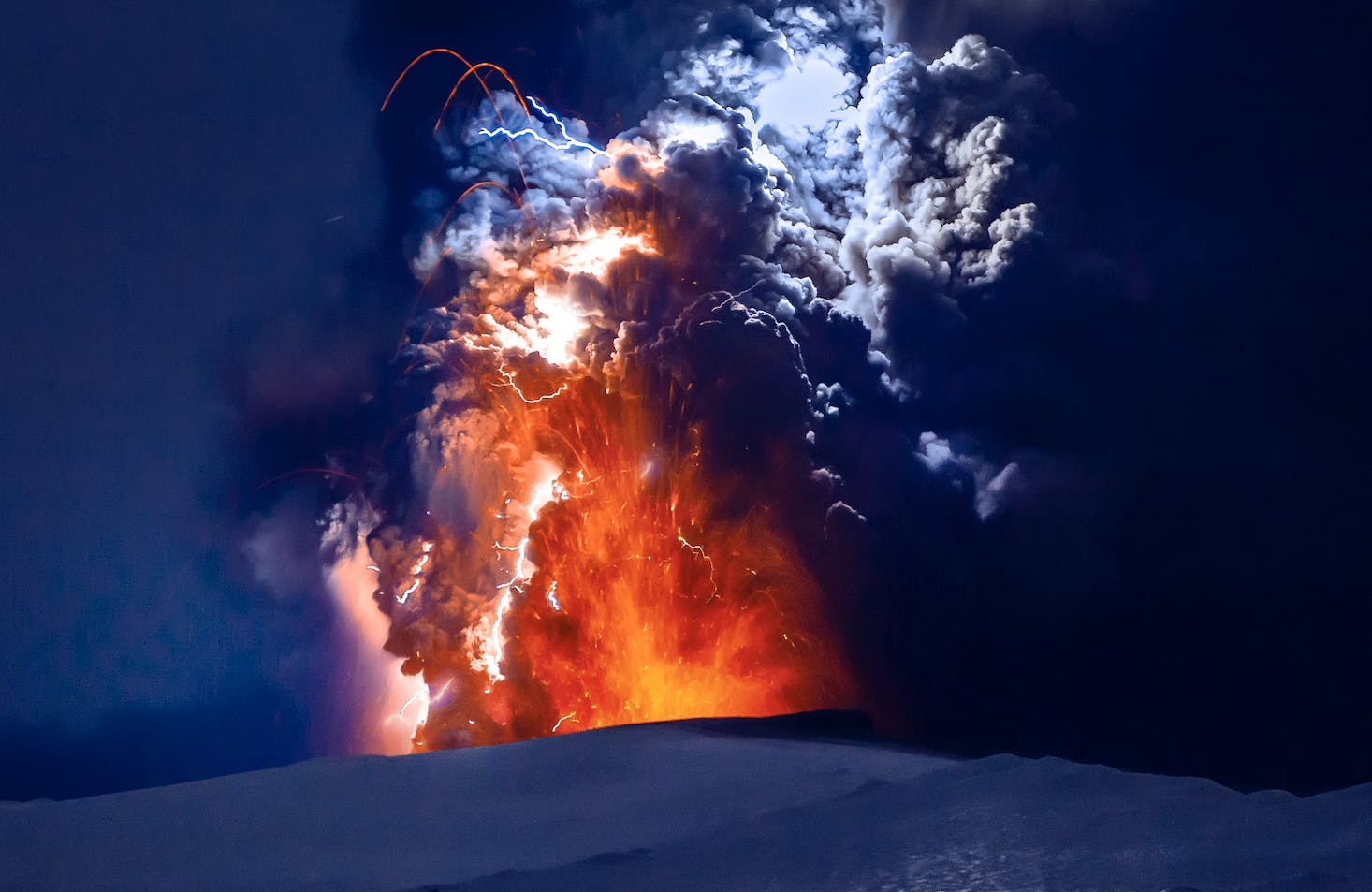
Phreatic Eruptions FAQ
Is a phreatic eruption quiet or explosive?
Phreatic eruptions can be explosive despite being different from the more destructive magmatic eruptions. While there may not be a significant release of lava during a phreatic eruption, the forceful expulsion of steam and volcanic material can still pose substantial hazards to the region. The explosiveness of a phreatic eruption can vary, and factors such as the amount of water involved, the depth of the magma, and the specific conditions at the volcano influence the intensity of the explosion.
Should I be concerned about phreatic eruptions when visiting Iceland?
The Icelandic Met Office closely monitors Iceland’s volcanic systems, and alerts are in place if an eruption occurs. Scientists monitor earthquakes and any indication that a system may erupt in the near future. There is no need to worry when visiting Iceland.
Is There Another Name for a Phreatic Eruption?
Phreatic eruptions are also referred to as steam-driven eruptions.
What happens after a phreatic eruption?
A phreatic eruption can leave a crater, a debris field, and potentially boost hydrothermal activity.
Popular articles
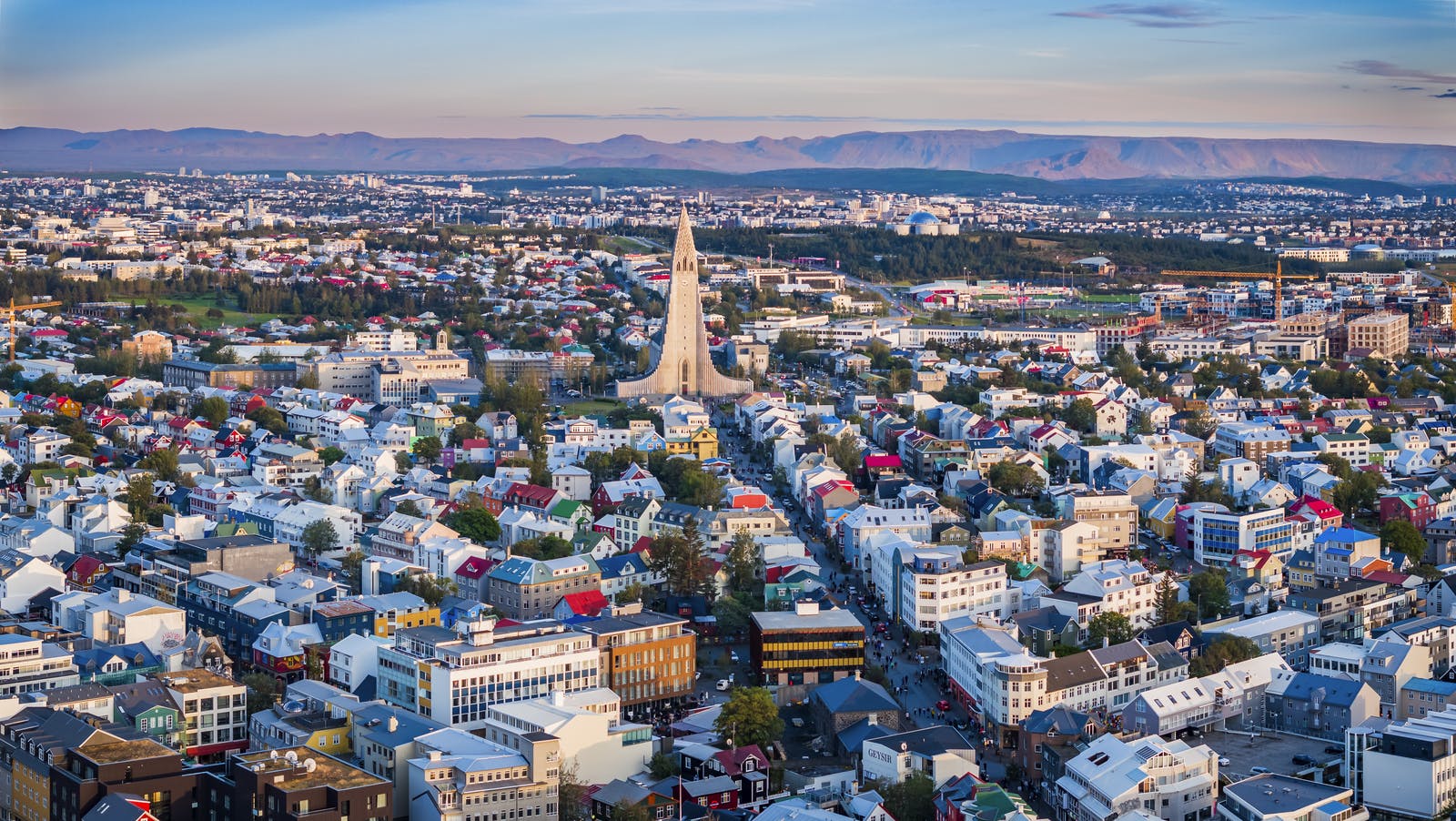
Things To Do In Reykjavík In June
Discover the best of Reykjavík in June: midnight sun adventures, vibrant festivals, and unique cultural experiences. Make your trip unforgettable!

The New Eruption May 29th 2024 near Reykjanes!
From rising magma at Svartsengi to an eruption on May 29th, 2024! See all updates of the volcanic activity on Iceland's Reykjanes Peninsula Sundhnúkur Crater Row.

Sundhnúkagígar Crater Row Volcanic Eruptions
The anticipated volcano has erupted in the Reykjanes Peninsula, the site is being called Sundhnúkagígar Crater Row. See the historic insights on the seismic activity and volcanic eruptions.

Earthquakes in Iceland
Earthquakes in Iceland are a fact of life. Each year, hundreds of small tremors shake the earth, a reminder of the country’s position on a tectonic plate boundary.

Volcano Museums and Exhibitions in Iceland
If you don't manage to visit an actively erupting volcano in Iceland - Experience its force at one of these excellent volcano museums and exhibitions in Iceland.

Top 10 Places To See the Northern Lights in Iceland
You can see the northern lights across the country, but some spots are more suitable than others. Find the best place to see the northern lights in Iceland.

Ice Caves From Reykjavik
Travel beyond the capital for a closer look at an ice cave under one of Iceland’s glaciers. If you can’t spare the time, experience Perlan’s ice cave in Reykjavik.